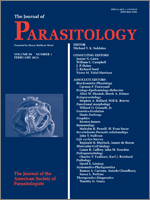Fish pathologists are often interested in which parasites would likely be present in a particular host. Parasite Co-occurrence Modeler (PaCo) is a tool for identifying a list of parasites known from fish species that are similar ecologically, phylogenetically, and geographically to the host of interest. PaCo uses data from FishBase (maximum length, growth rate, life span, age at maturity, trophic level, phylogeny, and biogeography) to estimate compatibility between a target host and parasite species–genera from the major helminth groups (Acanthocephala, Cestoda, Monogenea, Nematoda, and Trematoda). Users can include any combination of host attributes in a model. These unique features make PaCo an innovative tool for addressing both theoretical and applied questions in parasitology. In addition to predicting the occurrence of parasites, PaCo can be used to investigate how host characteristics shape parasite communities. To test the performance of the PaCo algorithm, we created 12,400 parasite lists by applying any possible combination of model parameters (248) to 50 fish hosts. We then measured the relative importance of each parameter by assessing their frequency in the best models for each host. Host phylogeny and host geography were identified as the most important factors, with both present in 88% of the best models. Habitat (64%) was identified in more than half of the best models. Among ecological parameters, trophic level (41%) was the most relevant while life span (34%), growth rate (32%), maximum length (28%), and age at maturity (20%) were less commonly linked to best models. PaCo is free to use at www.purl.oclc.org/fishpest.
How to translate text using browser tools
1 February 2013
Predicting What Helminth Parasites a Fish Species Should Have Using Parasite Co-occurrence Modeler (PaCo)
Giovanni Strona,
Kevin D. Lafferty
ACCESS THE FULL ARTICLE

Journal of Parasitology
Vol. 99 • No. 1
February 2013
Vol. 99 • No. 1
February 2013




